
"Flag Elephant of Thailand" Mask by fourretout Redbubble
A flag book that I bought in Thailand, entitled "The History of Thai Flags" (issued by the Fine Arts Department of Thailand in 1977), says: (1) A plain red flag became a national flag on Sep 3rd 1680. (2) Rama I added a white chakra in the center in 1782. (3) Rama II further added a hoist-facing white elephant inside the chakra in 1817.
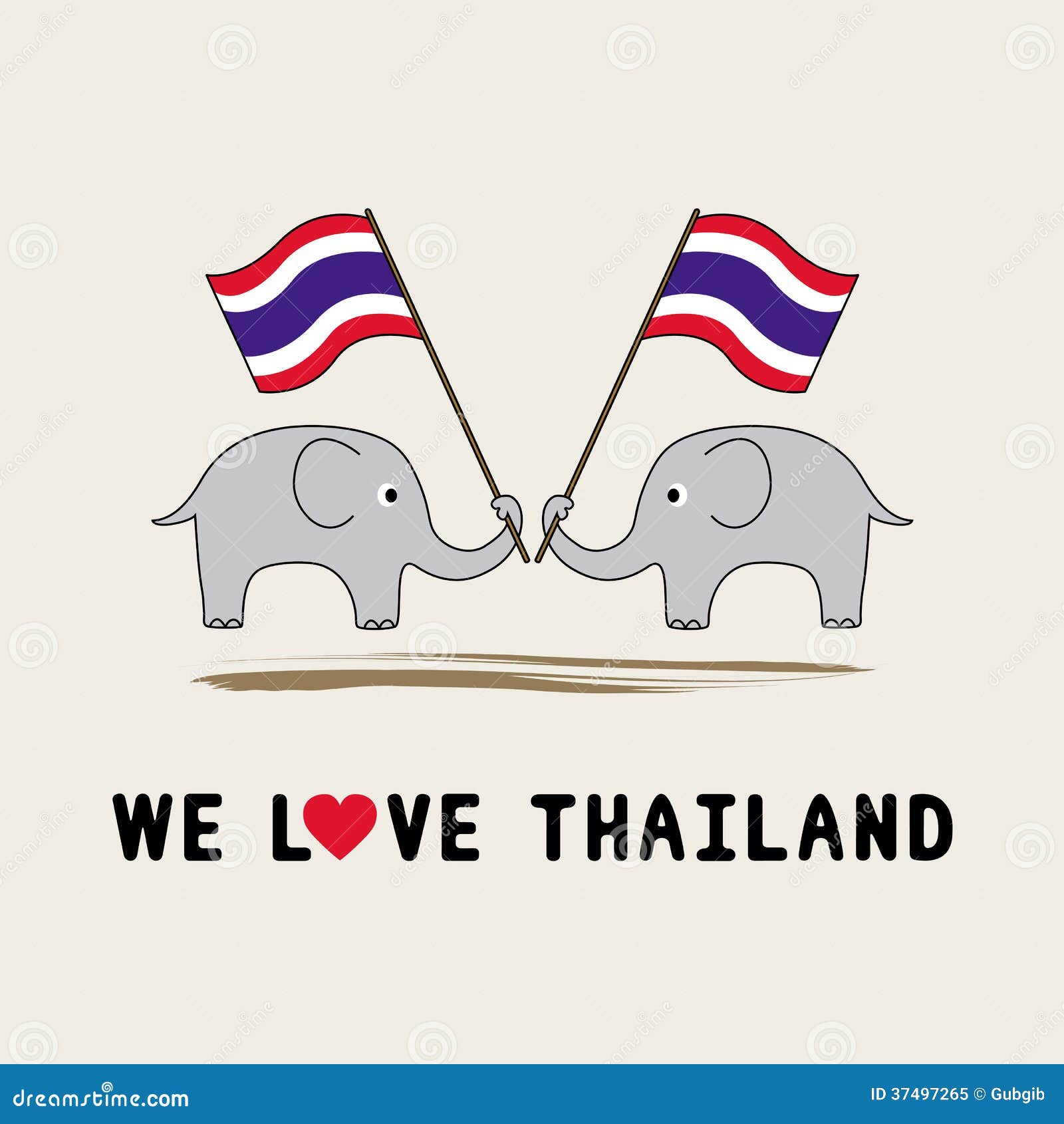
Two Elephants Hold Thai Flag1 Royalty Free Stock Photo Image 37497265
Muhammad Sajjad | Last Updated: January 2023 Table of Contents: The flag of Thailand is one of the most recognizable flags of the world. But despite its popularity, many people do not know what it represents. Each flag has a backstory, whether it be one of nationalism, pride, or aspirations for the future.

Thai Flag Elephants Vector Illustration, Bangkok, Travel, Asia PNG and Vector with Transparent
In 1782 a white chakra (wheel), symbol of the ruling Chakri (Chakkri) dynasty, was put on the flag of navy vessels, and in 1855 both navy and privately owned vessels displayed a red flag with a white elephant in the centre. The rare white elephant had long been a symbol of good fortune associated with the nation.

Le drapeau Thaïlandais Signification et histoire Vivre en Thaïlande
Then in 1855, King Mongkut (Rama IV) officially created the first flag, complete with a red backdrop and a white elephant in the middle of it, which has long been a royal symbol and the national animal of Thailand. In 1917, the country adopted the current flag design; however, at this point, the middle stripe was also red.
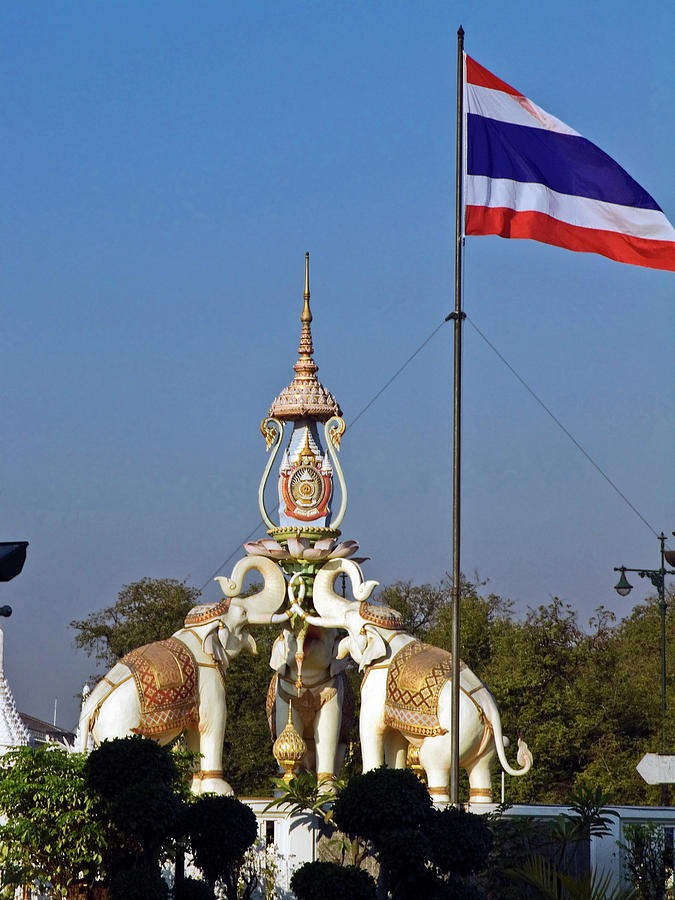
Thai Flag and Elephants Photograph by Sally Weigand Fine Art America
White elephants are worshipped in all Buddhist temples of Thailand. They are believed to be the descendants of heaven and represent purity and greatness. In a Thai legend, Queen Maya (Buddha's mother) dreamed of a white elephant before getting pregnant with the first Buddha, Guatama, over 2,500 years ago.

Flag Elements Of Thailand, Thailand, Thailand Elephant, Flag Of Thailand PNG and Vector with
Kelly Iverson 21 April 2021 Elephants are major symbols in Thailand, found on everything from intricately designed temples to humble beer labels. There are an estimated 3,500 in the wild here and about the same number in captivity. But how did the elephant ( chang in Thai) become Thailand's national animal and symbol?

Thailand Elephant Vector With Flag Colour And Landscape Background, Backgroung, Color, Flag PNG
A White Elephant on The Red Field (1840)Thai Flag Museum. The Re-design of Siam Flag. In 1840, during the reign of King Rama III, the new Siam flag pattern featuring the white elephant without a chakra was used on both the royal ships and the general public.
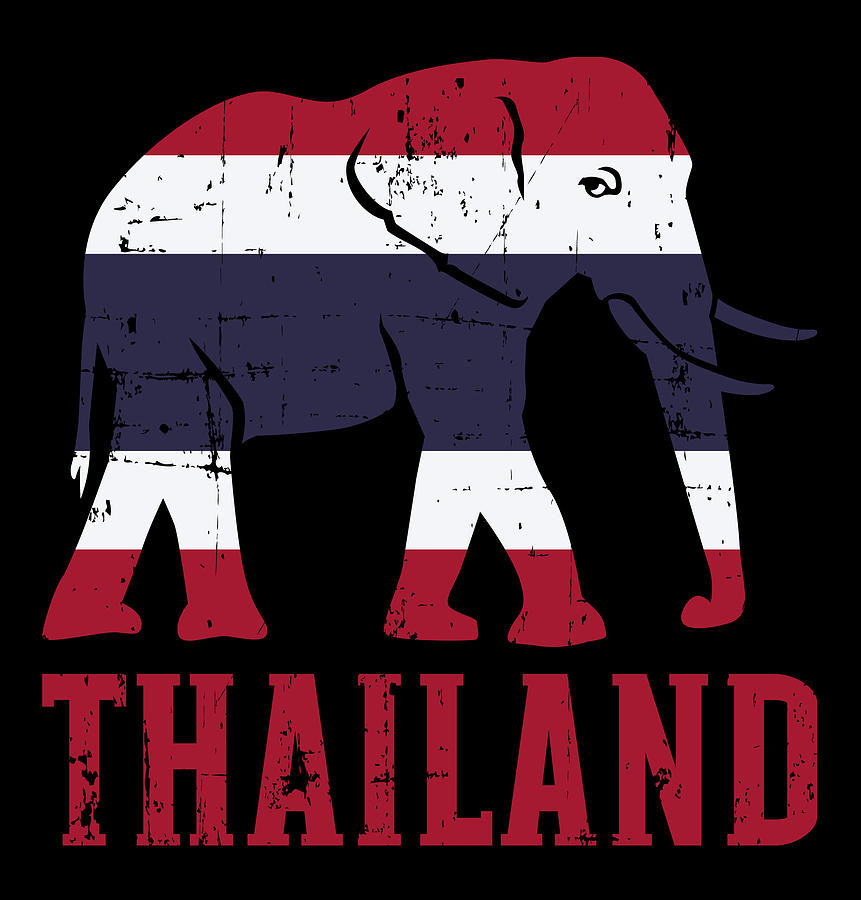
Thailand Elephant flag Digital Art by By Designzz Pixels
The current flag of Thailand is known as trairanga, which means tricolor. Also, Thailand is sometimes called "the country of a white elephant" since the original flag carried in its center a symbol of elephant. However, the elephant has been in 1917, when the country entered the war, replaced by a blue stripe.
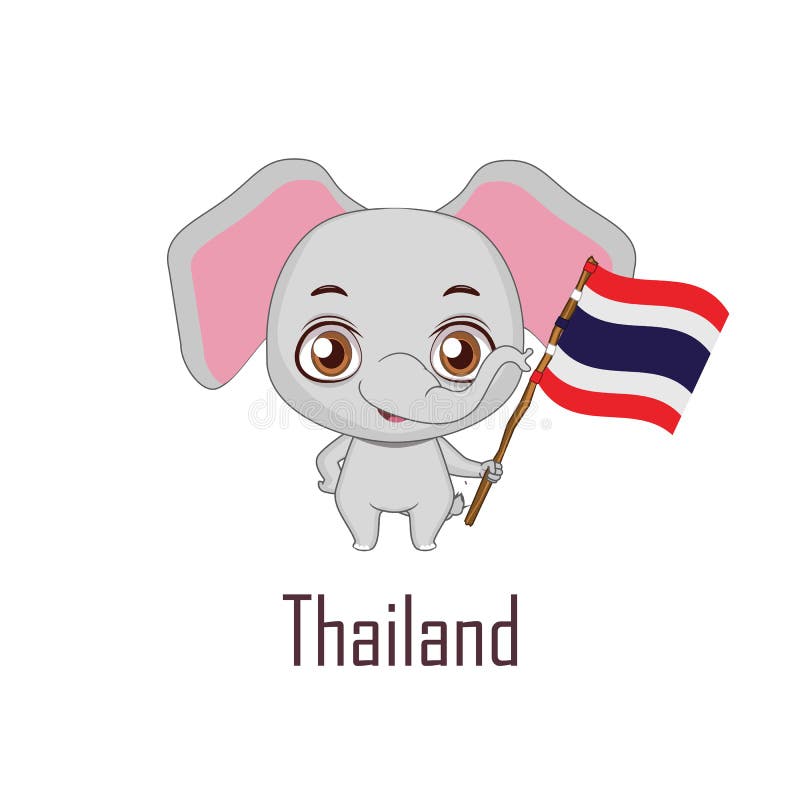
National Animal Elephant Holding the Flag of Thailand Stock Vector Illustration of official
Third Thai Flag (1809 - 1851) Rama II changed the flag to have a standing White Elephant in the center of the disk. He did this because he received 3 white elephants. So he wanted a White Elephant in the flag. In Thailand, a white elephant is an animal that is considered to bring prosperity and luck. The first plain red Flag was still used.

'Thailand Elephant / Flag Bangkok' Men’s Premium TShirt Spreadshirt
Chang, meaning elephant, is Thailand's national animal. Find out how this came to be. There are a number of reasons why this giant animal was chosen as Thailand's national symbol, a key reason being that the Thai people celebrated the elephant's incredible strength, durability, and longevity.

Elephant hold Thai flag3 Royalty Free Vector Image
The population of wild elephants in Thailand are estimated to be 3,084-3,500 individuals. Compared to 14 years ago, the elephant population trend is increasing at the present time. Western Forest Complex has the highest number of elephants followed by Dong Phayayen-Khao Yai Forest Complex and Phu Khieo-Nam Nao Forest Complex.

Thailand National Flag History & Facts Flagmakers
The elephant has had a considerable impact on Thai culture. [2] The Thai elephant ( Thai: ช้างไทย, chang Thai) is the official national animal of Thailand. The elephant found in Thailand is the Indian elephant ( Elephas maximus indicus ), a subspecies of the Asian elephant.

Elephant Carrying Thai Flag Stock Vector (Royalty Free) 1196704189 Shutterstock
Today, the elephant is Thailand's national symbol, a living testament to the nation's rich history and cultural heritage. 🐘The Cultural Significance of Elephants in Thai Society In the vibrant tapestry of Thai culture, elephant is more than just a national animal of Thailand; they are deeply ingrained symbols of strength, loyalty, and longevity.

Elephant Thailand Flag and Blue Sky is Background Stock Photo Image of fabric, cloud 98379516
The national and royal symbol of Thailand is Garuda, the mount of Lord Vishnu. [1] [2] National flag. Flag of Thailand. ธงไตรรงค์. Flag of Thailand. The design was adopted on 28 September 1917, according to the royal decree issued by Rama VI . National anthem. Thai National Anthem.
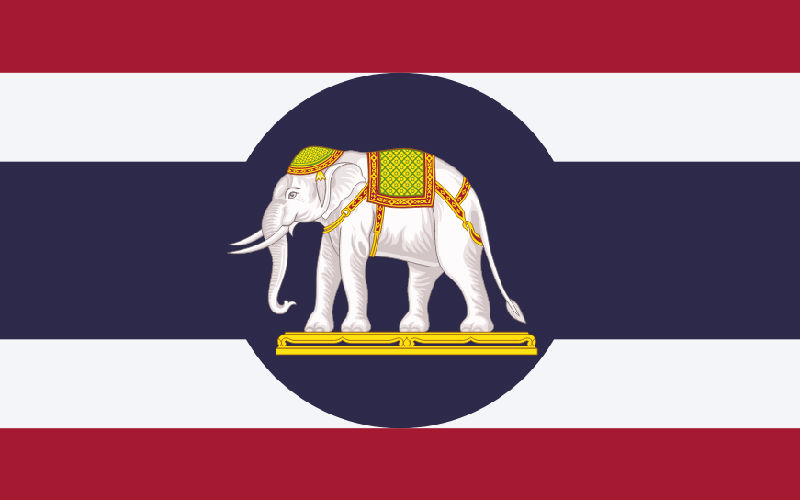
32 Interesting Facts about Thailand Elephant UME Travel
The elephant flag in Thailand is called "Throng Chag" or "The Elephant Flag". It features a white elephant standing on a platform, and it symbolizes the monarchy and the power of the Thai royal family. What are the symbols of Thai flag?

How the Elephant Became Thailand's National Symbol
Siam Flag Museum website; directed by Pluethipol Prachumphol. Royal Golden Jubilee Network. The story goes that during the 1916 flood the king of Siam - since 26th June 1939 called Thailand - saw the national flag - red with a white elephant - hanging upside down. Because of the distress a new flag was adopted that could not be hung.